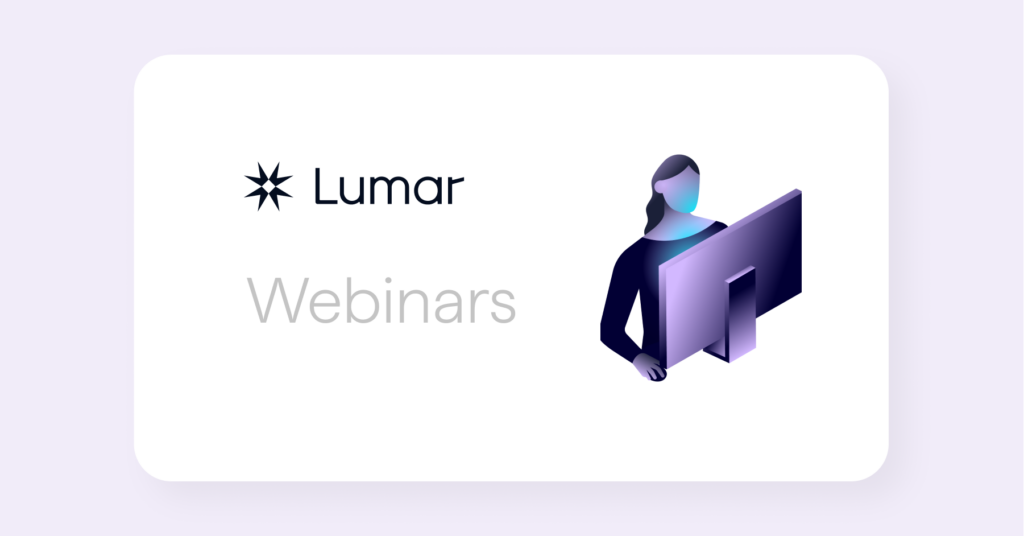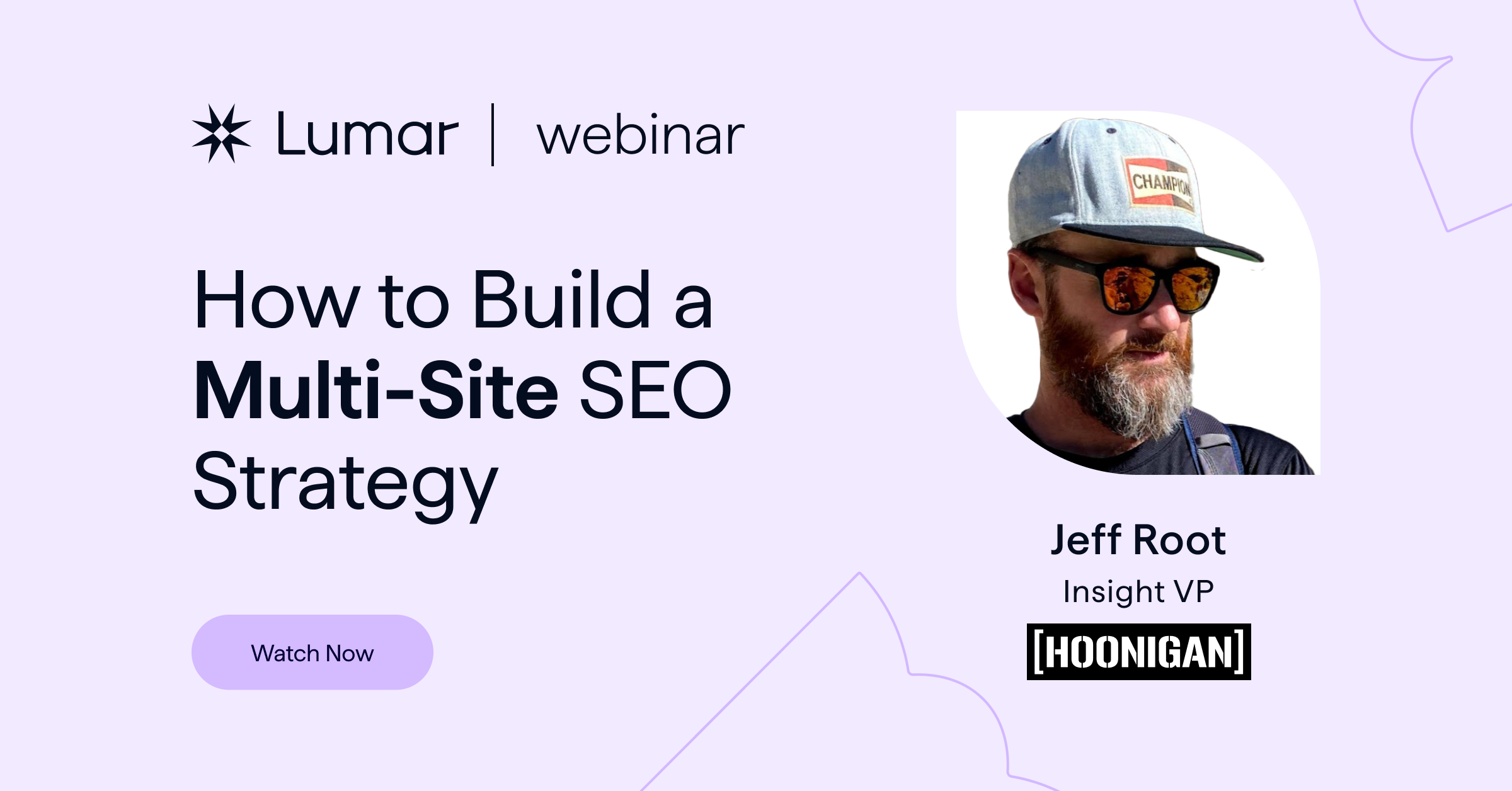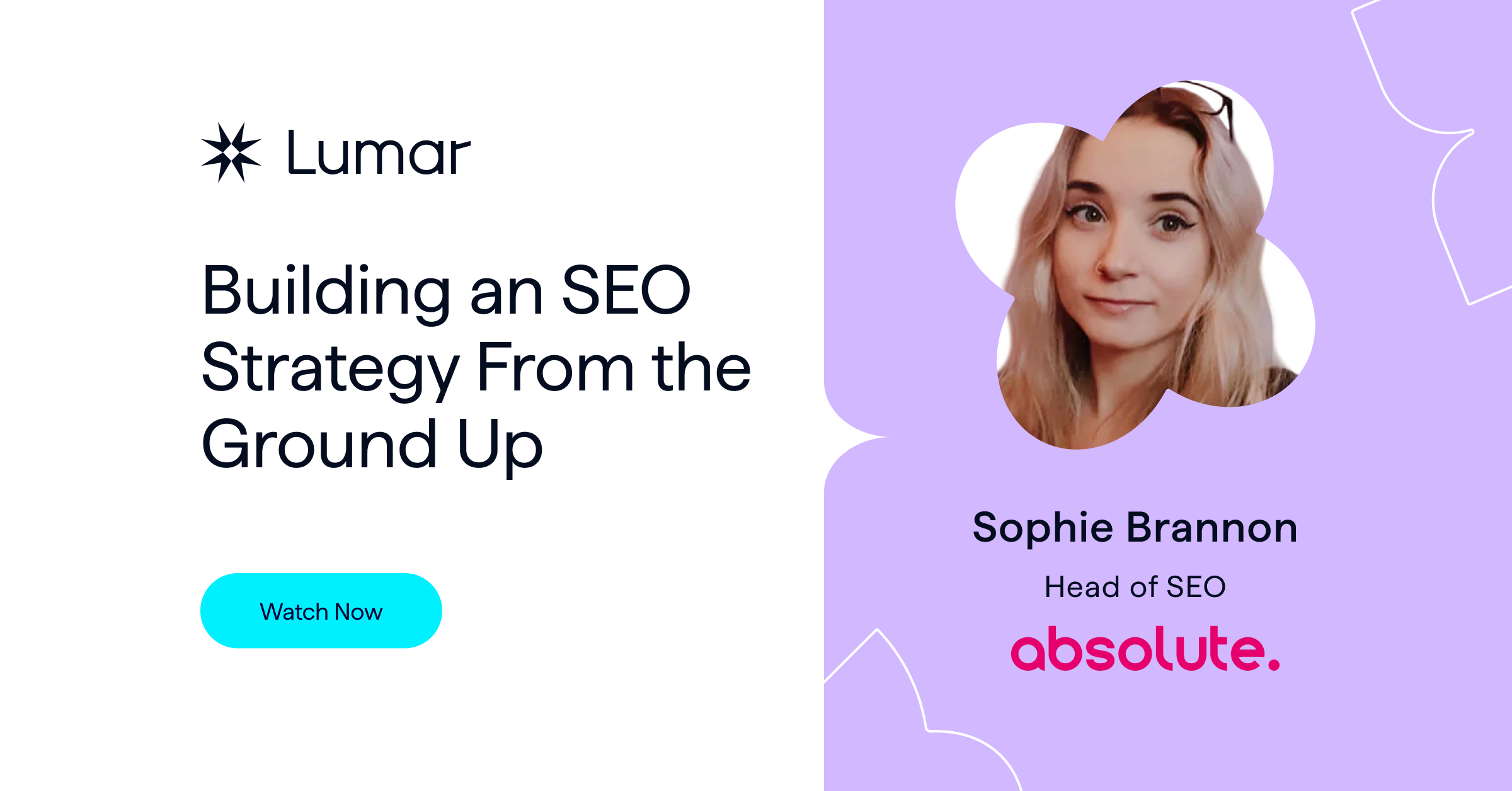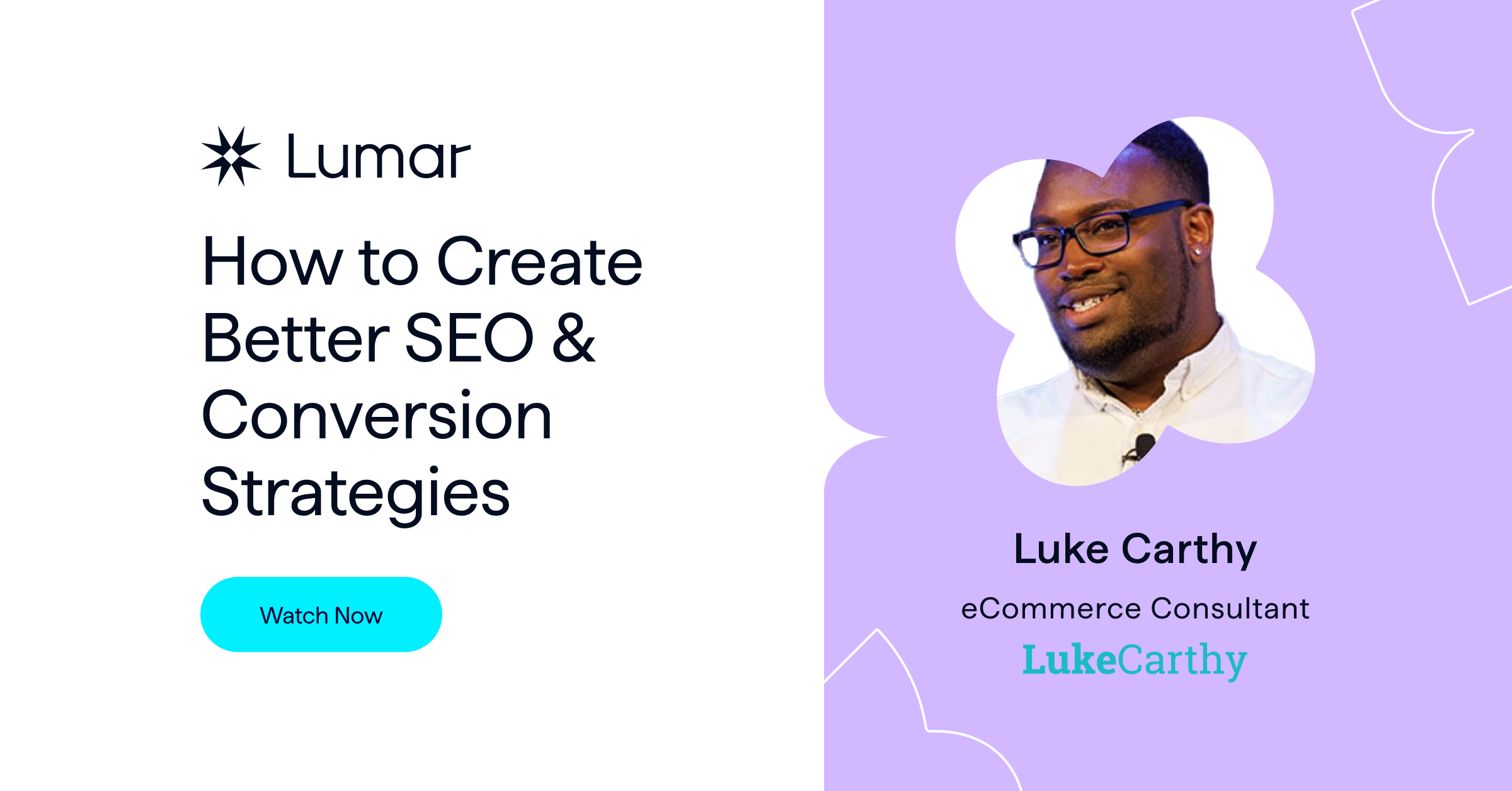For October’s edition of the DeepCrawl (now Lumar) webinar series, we were joined by the immensely knowledgeable Jamie Alberico of Arrow Electronics and DeepCrawl’s moderator extraordinaire, Jon Myers. Jamie walked us through the key considerations for structuring websites logically so that they cater to different types of user intents.
Here’s the full recording of the webinar with Jamie and Jon:
You can also find Jamie’s slides here:
Jamie has worked as an SEO for a variety of different businesses including agencies, SaaS tools, in-house and enterprise businesses, as well as ecommerce sites. This has meant Jamie has been able to see how a lot of sites have been set up and knows from experience what works and what doesn’t.
What is information architecture?
The underlying principle behind site structure is information architecture. Information architecture is about organising the information, content and the functionality of a site for the best user experience possible.
Good site structure and information architecture benefits SEO, with better indexing of pages (especially for large sites), higher traffic and rankings, as well as improved user engagement.
How can we build better information architectures?
The trick with information architecture is that it isn’t ‘one-size-fits-all’. It requires a bit of art and a bit of science combined together with role play; you need to put yourself in the position of your business, but also more importantly your customers.
Know your business
Knowing your vertical is going to determine the tone you’re going to strike with your customers, but also the standards that you need to abide by in Google search. If the business deals with topics like money and medical advice, then you are considered as a Your Money or Your Life (YMYL) site which have higher standards that need to be met in order to rank well in organic search.
What’s your unique value proposition?
You need to know what sets your business apart from the competition. What is your unique perspective that provides value within that vertical? Unique reviews, tools, resources, articles could all be means by which your business establishes itself as having a unique value proposition. A truly great value proposition introduces prospective buyers to your brand and makes a strong first impression (check out the Warby Parker homepage).
What’s your business goal?
Defining a main objective or key business goal is a critical component to understanding your business. Make sure that marketing initiatives align with your business goals and what keeps the lights on.
Once you know your business, you can better understand your brand’s goals and the objectives needed to meet those goals. From there you can form strategies and tactics to achieve conversions and success.
Jamie recommends laying out your macro and micro conversions. Identify the interactions that users have with your site that indicate that they are building trust and ownership in the process you’re offering to them. Know what these conversion points are and actively monitor them, so you can establish what the successful pathways are.
Know your customers
Your users are on a quest, they are there for a reason and giving you their time during this process. The key to effective UI is about making sure your business goals overlap with user intent. More than anything: you need to satisfy user intent.
You need to figure out what goal your potential customers are coming to your site with. Focus on:
- What brought them to your site? A search engine, a specific phrase, a branded term.
- Do you give them what they’re looking for? Make sure content provides the best and most accurate answer.
- What do you want them to do next? Think about what the next step is that you want users to take, and what you want in return from them.
There are different types of intent, with the first being direct e.g. “I want to buy a toaster”. This is going to result in a classic navigation where someone is trying to find a specific item.
However, intent isn’t always obvious. What if a potential customer wanted to host brunch instead of just buying a specific item? Instead, you’d want to interact with them by using a storytelling narrative, which will involve a longer engagement process meaning users will be more invested.
With an optimised silo structure, you can combine and offer both of these types of navigation. A visitor can engage with this story-telling narrative while also finding more specifically what they need. Implementing this is about semantic interlinking and connections along with having relevant content with next steps at each point along the way.
Making the next step clear and logical
Knowing how your users speak can make a big difference. Different types of users may use different terminology to refer to the same thing, so you need to be able to cater to each of these users. For example, hosting brunch is going to use different wording and syntax depending on if the user is an individual or a business.
Give your users a map quickly because you only have around 50 milliseconds to let them know that their intent will be fulfilled. At any given time, a user should know:
- Where am I?
- Where can I go?
- Where have I been?
Make sure your map is accurate, this may include any navigation or breadcrumbs. These maps need to accurately reflect what your site actually offers.
Wide is better than deep
When creating silo structures, a wide site structure is better than a deep one. It is a better option to have a user who can survey a large landscape rather than go down tunnels. You can do this by using things like mega menus.
If users have to dig down unnecessarily, this creates a poor user experience and degrades their trust that their intent will be fulfilled. Each extra click creates friction, so we want to get them where they want to be as quickly as possible with the least amount of friction. Make navigating a site enjoyable, Modcloth does a great job of this with their mega menu.
Turning content into crossroads
Make the next step clear
If you have pages that don’t link clearly to your goals, ask yourself how you can change these pages so they overlap user intent with your business goals. Culling content may be an option, but first think about how you can repurpose content and make the next steps more clear.
Static text links
We want to have 1+ static text link for every page on the site. If you’re using a mega menu which is rendered by JavaScript, then it is an absolute necessity that it is parsed within the initial HTML on page load. Those static links need to be there because Google might not render the page for a couple of days or a couple of weeks after initially crawling the page.
Avoid multiple copies
Try to avoid creating multiple copies of pages with different URLs. We want one true master page for each topic or category, because this is important when it comes to things like cross-categorisation of products.
Match placement to user intent
Keep a page’s above-the-fold content true and honest as to why the user is there. Google will penalise you on mobile for featuring intrusive ads above-the-fold because this is seen as trying to take the user’s attention away from their initial purpose for clicking on your site. The first thing a user should see on a page is that which is most relevant to their intent.
Expand on options
If you work on an ecommerce site, invest in your images. Your visitors need to have a tangible experience before they make a purchase, and an image is the closest thing to be able to create that. Use features like “Frequently bought together” below-the-fold to expand on the initial offering while still trying to match the user’s intent.
Equally, you don’t want to disrupt their journey and take them away from their main intention. If they’ve completed a micro-conversion, like adding an item to a cart, don’t then take them to a separate checkout page. Instead, use a mini-cart so they can continue with their intention of browsing and possibly adding more items.
Match autosuggest indexable pages
People use site search a lot and convert better from it, so it makes sense to provide results that match to indexable pages on your site. One of the best ways to improve site search is to look at what people actually input and what they’re asking for, to then provide them with relevant pages to help them continue their journey on your site.
In summary
Jamie finished up by making the case for good information architecture because it makes SEO easier. Jamie’s site, Arrow Electronics, has over 4 million products in many different languages, and good information architecture allows her to break the logical linking structure into multiple Search Console properties, so alerts can be set and granular analysis can be conducted.
Thanks to Jamie and Jon for such an insightful webinar, and for all of those that attended and submitted brilliant questions. We’ll be publishing a follow-up post on our blog with Jamie’s answers to all of your site structure questions in the near future.
Improve your site structure with better internal linking
Internal linking is a critical part of crafting optimal site structure. Logical and well-thought-out internal linking ensures search engine bots can understand how your pages relate to each other and helps users navigate to topically relevant pages on your site. You can learn more about getting internal linking right in our Technical SEO Library guide on the topic.
If you want to learn more about this topic, make sure you read our in-depth guide on site architecture optimisation which goes into more detail about optimising taxonomies, click depth, internal linking and so much more.



